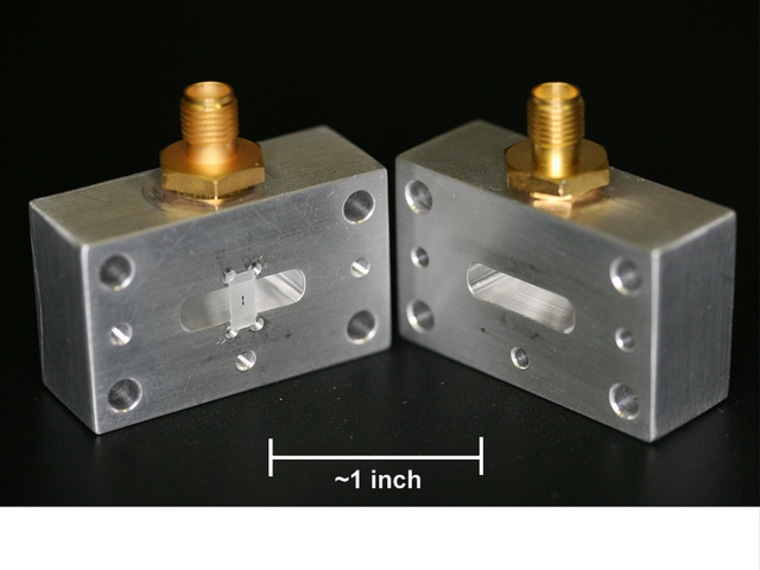
Real-world computers that can speedily crack even the most secure codes are within grasp thanks to recent advances that will allow for so-called fault-tolerant quantum computers, according to an expert in the field.
Quantum computers differ from classical, or regular, computers at the most basic unit of information. In classical computing, the basic unit of information is a bit: either a 1 or 0.
"A quantum bit can do the same thing, but it can also be both [a 1 and a 0] at the same time, which is a very strange concept," Matthias Steffen, the manager of IBM's experimental quantum computing group, told me on Monday.
It's like being two places at once – here and there.
"What this enables you to do is to perform certain tasks much, much faster than you can with a classical computer," added Steffen, who will present IBM's most recent findings on quantum computing Tuesday at the annual meeting of the American Physical Society.
Code cracking
One of the tasks researchers in quantum computing know for sure they can do faster is factoring – breaking a number down into its prime components, such as 3 and 5 are the prime factors of 15.
Most data encryption, Steffen explained, relies on the fact that factoring big numbers takes a long, long time. Being able to factor quickly is central to solving the complex math problems at the heart of encrypted data.
"On the quantum computer, you can perform these tasks exponentially faster, so that really has broad implications for data encryption," he noted.
Other potential uses for these futuristic computers may include more efficient searching through databases of unstructured information, perhaps to make sense of all the stuff we've revealed about ourselves in Google searches, Facebook status updates, and tweets.
Whether quantum computers will be used for database searches remains to be seen, partly because although quantum computing reduces the number of steps in any given calculation it requires a longer time on each step. "There will be a crossover somewhere," Steffen said, researchers just aren't sure where.
Error prone computers
That uncertainty stems, in part, from the fact that quantum computers were, until very recently, mostly a theoretical science experiment. Building practical quantum computers and figuring out their usefulness just hasn't been a priority.
The first order of business has been showing such a computer was even possible, which has been hampered because a quantum bit, when in the excited or "1" state, behaves like an artificial atom "and it can decay down from the 1 to 0 state, which would be an error," Steffen said.
One way to reduce this error is to make quantum bits live longer in this excited state. To do this, IBM researchers and colleagues have been working with a three-dimensional superconducting qubit that is a sandwich of a superconducting metal, a thin insulator, and a thin metal.
Experimental results show that this 3-D qubit maintains its coherence, or integrity, for up to 100 microseconds, which is a factor of 10,000 improvement over the state-of-the-art a decade ago, Steffen said.
What's more, this value reaches just beyond the minimum threshold to enable effective error correction schemes (ways to deal with faulty components), according to IBM. This, in turn, should free up engineers to begin thinking about how to build an actual quantum computer.
"It is not about one or two qubits anymore, it is how do I put ten of those on a chip," Steffen said.
"How do we actually get them to talk to each other? How do we get this to interface with the electronics we use, how do we write the software? How do we analyze all of our data?" he added. "That layer of the onion towards building a quantum computer is the next task we really have to delve into."
A functional computer with perhaps 100 qubits is plausible within 10 to 15 years, Steffen suggested. Getting there will require qubits with even longer coherence times, but reaching them is no longer as daunting, he added. And within his lifetime, he noted, a full scale quantum computer will likely exist.
When we have that computer, we'll have to figure out what to do with it, beyond cracking codes.
"There is great optimism that this will lead to something," Steffen said, "but it is not unambiguously clear at this point."
John Roach is a contributing writer for msnbc.com. To learn more about him, check out his website and follow him on Twitter . For more of our Future of Technology , watch the featured video below.